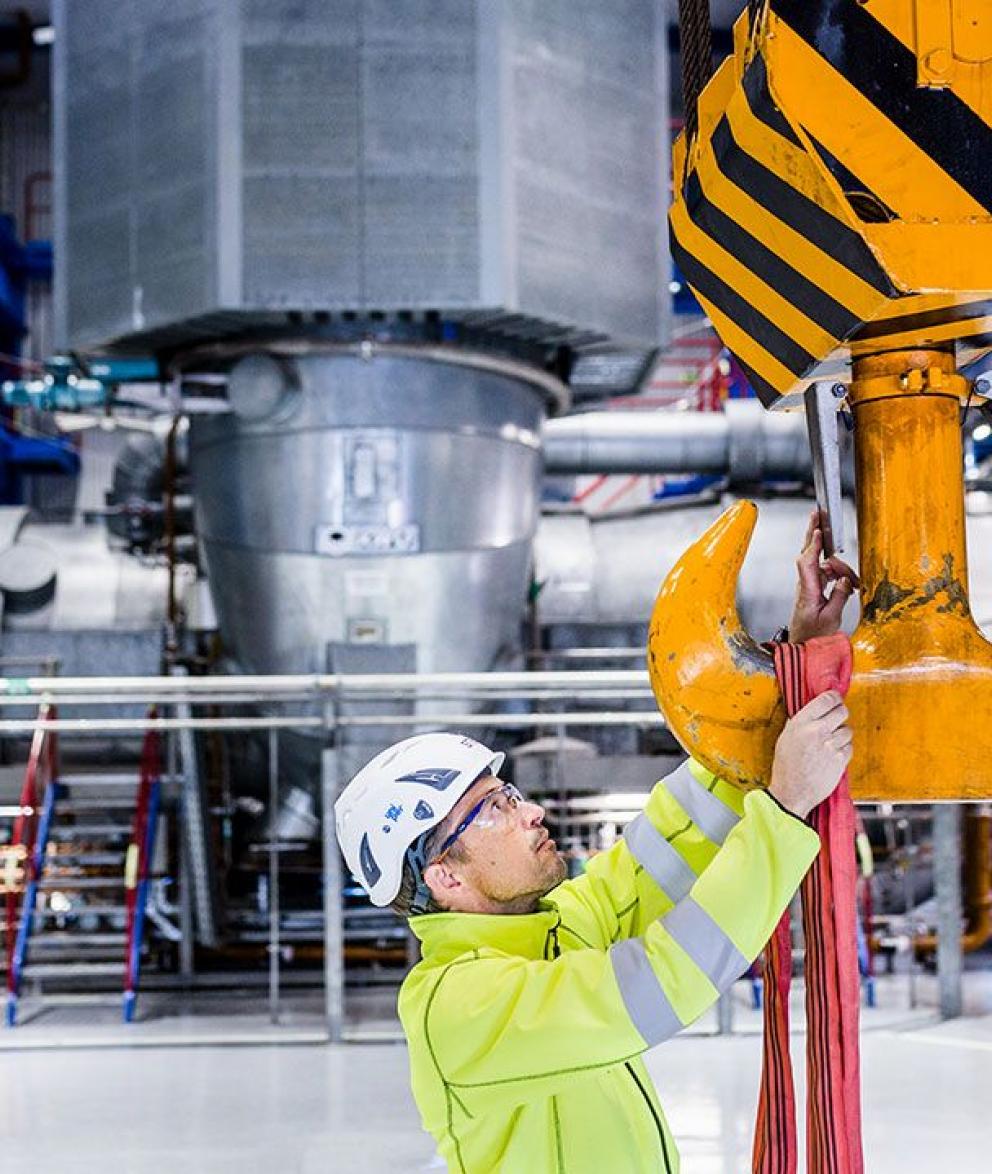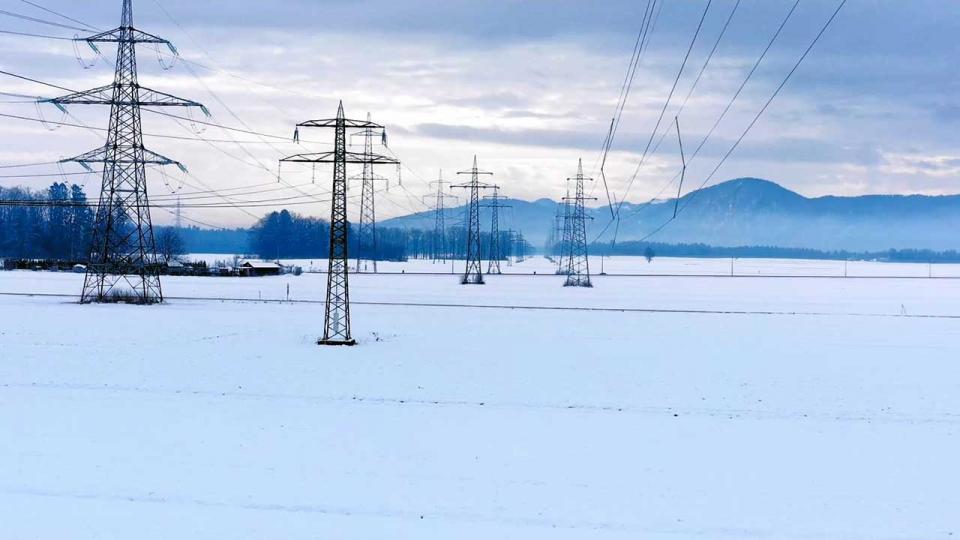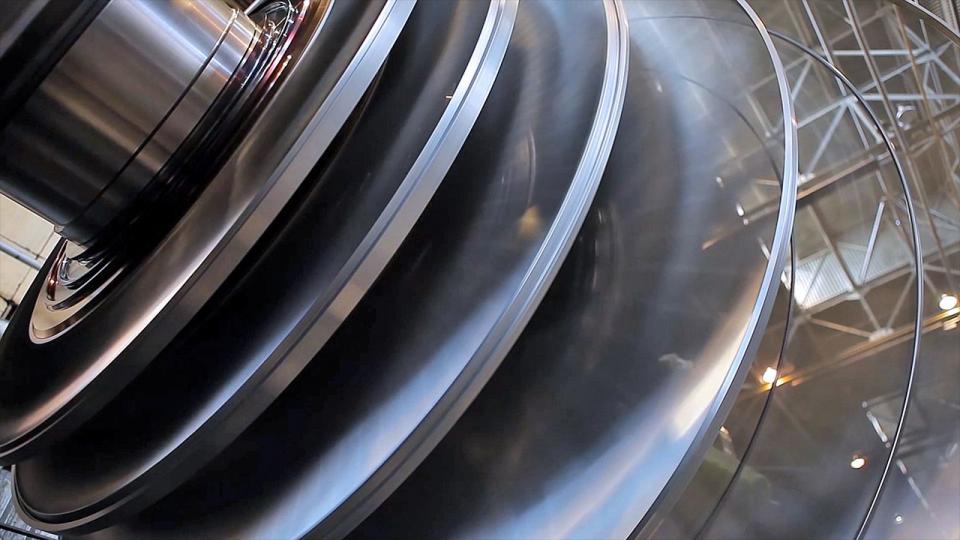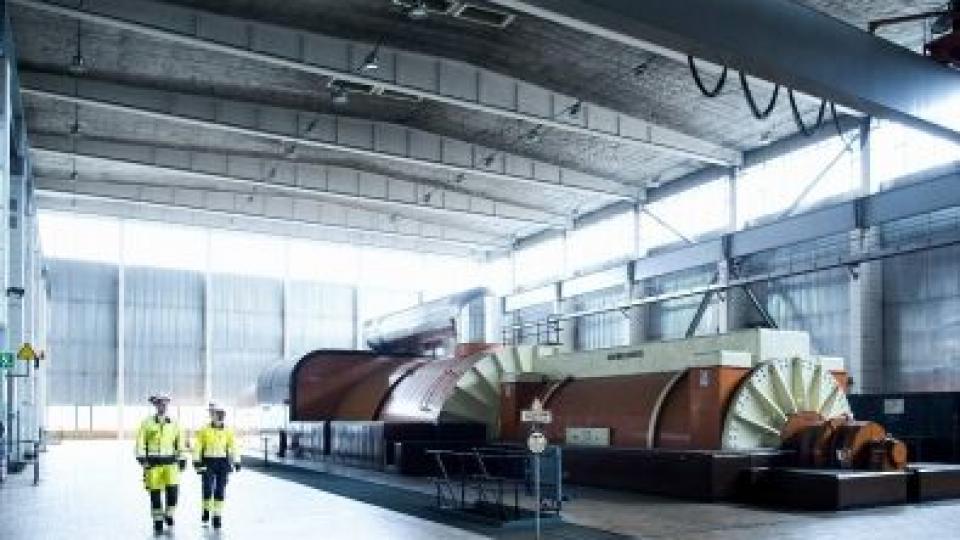Their primary role is to handle various electricity system disruptions that occur. These may pertain to the sudden failure of a transmission cable or a power plant unexpectedly losing its production capacity.
Disturbance reserve – power on standby
Uniper Sweden has nine gas turbines that are included in the disturbance reserve. The gas turbines are crucial to Sweden’s energy security and mitigate the consequences of any unexpected events in the electricity system, thereby preventing large-scale disruptions from occurring.
The gas turbines can also be activated when there is an extremely high demand for electricity, such as on cold winter days. The gas turbines are normally used only for short periods, and their annual operating time is minimal. The gas turbines can also deliver other supporting services to ensure a secure electricity supply, such as automatic frequency control.
The gas turbines were built in the 1970s, with the exception of the largest gas turbine in Halmstad, which was commissioned in 1993. In the past few years, major investments have been made in the gas turbines to improve their output level and efficiency, and to reduce emissions – all to ensure the delivery of power in extreme conditions.
Gas turbines ready to run on renewables
The gas turbines in Malmö are the first to convert to the renewable fuel HVO in the Swedish disruption reserve. HVO stands for Hydrogenated Vegetable Oil and is a renewable fuel produced from waste, vegetable oils and residues from the food industry.
Gas turbines can be activated quickly
One major advantage of gas turbines is that they can be started up quickly. It takes between 3 to 15 minutes for a gas turbine to reach maximum output, depending on the type and size. The start-up time is critical, particularly when the gas turbines are activated due to the sudden stoppage of a major power plant.
A gas turbine that is designed and built for electricity generation is called an industrial gas turbine. Jet engines similar to those used in airplanes can also be used, by linking them to a turbine and a generator. Such gas turbines are called jet engine power plants and have a particularly fast start-up time.
Our gas turbines are, as a rule, unstaffed and remotely controlled from a central control room. They are located around southern Sweden and have a combined capacity of approximately 500 MW.
How a gas turbine produces electricity
A gas turbine is driven by air and flue gas. This is where the name, gas turbine, originates – it has nothing to do with the fuel that is used. Gas turbines are usually powered by oil. The main components of a gas turbine are the compressor, combustion chamber and turbine.
1. The compressor sucks in and increases the pressure of the combustion air, which then flows into the combustion chambers.
2. Light oil is injected into the combustion chambers and ignited.
3. The hot flue gases drive the turbine.
4. The turbine powers both the compressor and the electricity generator.
5. The electricity generator feeds electricity to the grid.
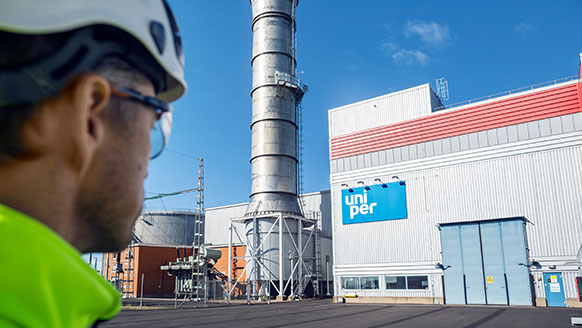
Gas turbines and the environment
Our gas turbine operations are certified pursuant to ISO 14001 – an international standard that establishes what a company needs to do to have a structured environmental agenda. If you have any questions about our environmental policy or goals, you are welcome to contact us via [email protected].
Our gas turbines are operated in a manner that causes the least possible emissions from such power plants. Fuel oil with an extremely low sulfur content creates low sulfur emissions. We have also invested in water injection for the older industrial gas turbines. Injecting water into the combustion chambers during the ignition phase sharply reduces nitrogen oxide emissions.
At the Halmstad plant, which has the newest and largest gas turbine, a combustion system was developed to generate low nitrogen oxide emissions even without utilizing water-injection technology.
The combination of short operating times, low-sulfur fuels and minimal nitrogen oxide generating combustion systems result in very low overall emissions annually.
About biofuels and their origin
According to the Act (2010:598) on sustainability criteria for biofuels and biofuels, Uniper must inform its consumers about the types of biofuels used for the production of heat, electricity and cooling, as well as its origin. The information is based on the information submitted in the annual reporting to the Swedish Energy Agency.
The information below is used liquid biofuels and their origin at our gas turbines in Malmö and at Karlshamnsverket during 2023.
Country of origin |
Share (total: 172,8 Greenhouse gas emissions gCO2e/MJ) |
|---|---|
Sweden |
14,06% |
Poland |
66,14% |
Germany |
8,17% |
Thailand |
11,63% |
Find out more
Much of what we do every day, and which drives the growth of our economy, is dependent on access to electricity. But what is it that enables all of our industrial processes to take place at the same time, and allows us to get to work in a climate-smart manner?
For Sweden to function and continue developing, we need secure and stable access to fossil-free electricity throughout the country. Longer power failures, extreme weather and other disruptions could have serious and costly consequences for society, industry and Sweden’s potential to become a fossil-free nation.
The power reserve is a resource that Svenska kraftnät has at the ready in the event of any electricity shortage in Sweden. During the winter, Karlshamnsverket is part of Svenska kraftnät’s power reserve.
